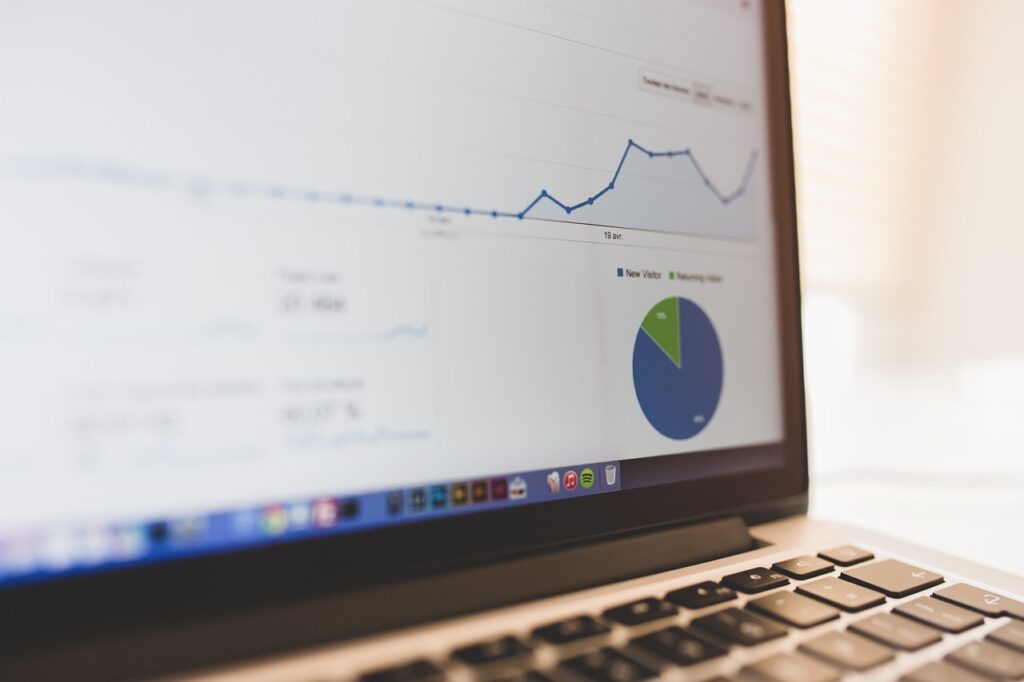Understanding Influencer Marketing
Influencer marketing has become a vital element of modern marketing strategies. It offers brands a unique way to connect with consumers through trusted figures who can convey authentic messages.
Importance of Influencer Marketing
Influencer marketing is gaining significant traction within the marketing landscape. Research indicates that 81% of US-based social marketers consider influencer marketing an essential part of their social media strategy (Sprout Social). This highlights its crucial role in enhancing brand visibility and engagement.
Influencer partnerships are not just for individual campaigns; brands are now integrating influencers into large multichannel campaigns to resonate across multiple platforms. This approach cultivates engaging content that captures attention more effectively than traditional advertising (Vamp).
The financial impact is also notable, with influencer marketing spending in the United States experiencing nearly a 100% increase over the last three years (GRIN). This surge underscores the effectiveness of influencer marketing strategies in forging solid brand-consumer connections.
Additionally, employing nano and micro-influencers can significantly reduce acquisition costs. These influencers are generally more affordable than traditional digital marketing methods while maintaining a strong effectiveness in guiding customers through the marketing funnel (GRIN).
| Metric | Importance |
|---|---|
| % of marketers using influencer marketing | 81% |
| Increase in influencer marketing spend (last 3 years) | Nearly 100% |
| Cost-effectiveness of micro-influencers | Lower acquisition costs |
Metrics for Evaluating Campaign Effectiveness
Measuring the effectiveness of influencer marketing campaigns is vital for ensuring a good return on investment (ROI). Here are key metrics you should focus on:
Engagement Rate: This metric indicates how well the audience interacts with your content, including likes, comments, shares, and saves.
Reach and Impressions: Understanding how many people viewed the influencer’s content or how often it was displayed helps gauge visibility.
Conversion Rate: Track how many followers took action after seeing the influencer’s content, such as making a purchase or signing up for a newsletter.
Click-Through Rate (CTR): Assessing the percentage of users who clicked on links provided by the influencer can help evaluate the effectiveness of calls to action.
Incorporating these metrics into your analysis will provide a clearer picture of how successful your influencer marketing efforts are. For ongoing evaluation of marketing strategies, keep an eye on the evolving marketing trends that align with your brand’s goals.
Leveraging Top Social Media Platforms
Influencer marketing thrives on social media platforms. Understanding how different platforms can be utilized in your influencer strategy can help you capitalize on the latest influencer marketing trends.
Instagram Influencer Marketing
Instagram remains a leading platform for influencer marketing, with 72% of marketers leveraging it for their campaigns. This platform is particularly favored for its visual nature, making it ideal for brands looking to showcase products through images and videos.
| Statistic | Value |
|---|---|
| Marketers Using Instagram | 72% |
| ROI Reported by Marketers | 30% |
| Easiest Platform to Collaborate | 32% |
For more insights on Instagram’s influence in the marketing world, you can check out the latest social media marketing trends.
YouTube Influencer Collaborations
YouTube is another significant platform, utilized by 58% of surveyed marketers. Its video-centric approach allows for in-depth storytelling and demonstrations, which can engage audiences effectively.
| Statistic | Value |
|---|---|
| Marketers Using YouTube | 58% |
| Highest ROI from YouTube | 20% |
Brands looking to create engaging video content should consider YouTube as a strong avenue for influencer partnerships. Further details on this platform can be explored in the video marketing trends.
TikTok as a Marketing Platform
TikTok has emerged as a vibrant space for influencer marketing, with 61% of marketers incorporating it into their strategies. However, only 14% report that TikTok yields the highest ROI from influencer collaborations.
| Statistic | Value |
|---|---|
| Marketers Using TikTok | 61% |
| Highest ROI from TikTok | 14% |
| Easiest Platform to Collaborate | 14% |
Despite the lower ROI, the platform’s ability to reach younger audiences and create viral content can be leveraged for brand awareness. Learn more about using TikTok effectively in marketing through our upcoming emerging marketing trends.
Facebook Influencer Partnerships
Facebook continues to be a favored choice among marketers, with 57% opting for this platform for influencer collaborations. It provides a broad demographic reach, which is beneficial for various brands.
| Statistic | Value |
|---|---|
| Marketers Using Facebook | 57% |
| Highest ROI from Facebook | 20% |
| Easiest Platform to Collaborate | 18% |
When looking to utilize influencers for a wider audience, Facebook serves as a robust option. For more information on Facebook’s strategy in influencer collaborations, consider our resources on current marketing trends.
By understanding how to effectively leverage these top platforms, you can align your marketing strategy with the latest trends and optimize your influencer partnerships for better outcomes.
Exploring Influencer Marketing Platforms
To effectively capitalize on the latest influencer marketing trends, it is important for you to utilize specialized platforms that can streamline the influencer selection process, enhance communication, and provide analytics. In this section, we will explore four prominent influencer marketing platforms: Mavrck, Upfluence, Grin, and Heepsy.
Mavrck and Its Benefits
Mavrck is designed to create strong connections between brands and influencers. It provides a wide range of tools for campaign management, allowing brands to manage relationships, content, and performance all in one place. The platform is particularly beneficial for creators looking to expand their reach and book paid campaigns.
| Feature | Description |
|---|---|
| Campaign Management | Tools for managing influencer campaigns |
| Performance Tracking | Analytics to evaluate campaign success |
| Creator Connections | A network for brands to find and connect with influencers |
For more information about how Mavrck can enhance your marketing strategy, consider checking out digital marketing trends.
Upfluence and AI Integration
Upfluence stands out with its AI-powered features that enhance influencer marketing strategies. This platform is especially useful for marketing teams looking to save time in influencer engagement. The AI capabilities allow for smarter influencer selection, ensuring that you align your brand with influencers who resonate with your target audience.
| Benefit | Description |
|---|---|
| Time Efficiency | Streamlined processes for managing influencers |
| Smart Selection | AI-driven recommendations of influencers |
| Campaign Analytics | Data insights to inform future strategies |
For more insights on AI in marketing, check current marketing trends.
Grin for End-to-End Solutions
Grin is an all-in-one influencer management platform that assists you throughout the influencer marketing process. From discovering potential partners to launching campaigns and tracking their success, Grin offers end-to-end solutions. Major brands such as Disney and Netflix utilize Grin’s tools, emphasizing its effectiveness for large-scale campaigns.
| Feature | Description |
|---|---|
| Partnership Discovery | Find and evaluate potential influencers |
| Campaign Management | Tools for launching and monitoring campaigns |
| Reporting | Comprehensive analytics for performance assessment |
For detailed information on campaign management, refer to our article on content marketing trends.
Heepsy for Influencer Search
Heepsy is a global influencer search engine that enables you to find influencers based on various demographics, including niche, location, and platform. This targeted approach allows you to identify influencers that align with your brand values and marketing strategies, facilitating a more effective collaboration process.
| Feature | Description |
|---|---|
| Search Filters | Options to filter by niche, location, and follower count |
| Global Access | A platform that caters to brands worldwide |
| Influencer Analytics | Insights into influencer performance and engagement |
For more information about effective influencer search, consider exploring the latest in social media advertising trends.
Leveraging these platforms can significantly enhance your influencer partnerships and ensure you stay ahead in the ever-evolving landscape of influencer marketing.
Emerging Trends in Influencer Marketing
As the landscape of marketing continues to evolve, understanding the latest influencer marketing trends can help you stay ahead. Here are some significant trends shaping the future of influencer marketing.
Industry Growth and Projections
The influencer marketing industry is experiencing remarkable growth. It is projected to be valued at $24 billion by the end of 2024, an increase from $16.4 billion in 2022. This indicates a substantial opportunity for brands to engage with their audiences through influencer collaborations. Investing in influencer marketing strategies can yield fruitful results as consumer engagement continues to rise.
| Year | Projected Value (in billions USD) |
|---|---|
| 2022 | 16.4 |
| 2024 | 24 |
For more on the latest marketing trends, explore our full guide on marketing trends.
Adoption of AI in 2025
The adoption of AI in influencer marketing is set to accelerate significantly. By 2025, marketers and creators will increasingly utilize AI for multiple purposes:
- Ideation: Generating creative concepts for campaigns.
- Streamlining Workflows: Improving efficiency throughout the marketing process.
- Automating Repetitive Tasks: Allowing teams to focus on strategic initiatives.
- Enhancing Creativity: Pushing the boundaries of innovation in marketing campaigns.
As AI becomes more integral to influencer marketing, brands will find new ways to enhance their campaigns and engage their audiences effectively.
Entertainment-led Marketing Strategies
In 2025, entertainment-led marketing strategies will become essential for brands aiming to distinguish themselves in a crowded content landscape. Brands are expected to:
- Create bolder campaigns with innovative concepts.
- Develop engaging content that resonates with audiences.
- Leverage AI to speed up production processes while maintaining creativity.
This trend highlights the importance of capturing attention through entertaining and relevant content, as businesses strive to meet higher audience expectations. For more insights on engaging marketing strategies, refer to our article on content marketing trends.
By aligning your marketing efforts with these upcoming trends, you can enhance your influencer marketing strategy and achieve better engagement with your target audience.
Maximizing ROI in Influencer Marketing
To achieve the best outcomes from your influencer marketing efforts, it’s essential to focus on maximizing return on investment (ROI). This involves several strategic steps, including setting clear performance indicators, tracking conversion metrics, measuring web traffic and revenue, and identifying top-performing influencers.
Setting Key Performance Indicators
Establishing Key Performance Indicators (KPIs) is the foundation for measuring the success of your influencer marketing campaigns. KPIs help you gauge your effectiveness and provide a structured way to communicate successes to your team and stakeholders. Effective KPIs might include reach, engagement rate, conversion rate, and overall revenue contribution (GRIN).
| KPI | Description |
|---|---|
| Reach | Total number of unique users who see your content |
| Engagement Rate | Percentage of users who interact with your content |
| Conversion Rate | Percentage of users who take a desired action, such as making a purchase |
| Revenue Contribution | Total sales generated from influencer partnerships |
Setting these indicators builds a clear roadmap for your campaigns and ensures alignment with your overall marketing goals.
Tracking Conversion Metrics
Tracking conversion metrics is crucial during your influencer campaigns. These metrics help ascertain how effectively your influencer collaborations translate into tangible actions, such as purchases, sign-ups, and subscriptions. You might consider using trackable links, discount codes, and affiliate links for measurement purposes. Utilizing multiple conversion metrics gives you a comprehensive view of campaign effectiveness (GRIN).
Here’s a sample table outlining potential conversion metrics:
| Metric Type | Description |
|---|---|
| Trackable Links | Unique URLs to monitor website traffic generated from influencers |
| Discount Codes | Promotional codes that influence purchases via influencer referrals |
| Affiliate Links | Special links that track sales generated through specific influencers |
Measuring Web Traffic and Revenue
Measuring the revenue generated from influencer partnerships is vital for justifying your marketing spend and securing additional budget. To effectively demonstrate ROI, calculate the revenue from influencer-driven sales, content creation, and customer acquisition. Influencer marketing has the potential to yield impressive returns; in fact, it generates over a 600% return on average, according to the Digital Marketing Institute (GRIN).
| Measurement Type | Example Calculation |
|---|---|
| Sales Revenue | Total sales attributed to influencer promotions |
| Cost per Acquisition | Total spend divided by the number of new customers gained |
Identifying Top-Performing Influencers
Selecting the right influencers can significantly impact your campaign results. Analyze metrics such as demographics, engagement rates, followers, and conversion results to determine which influencers are driving the most revenue. Understanding the characteristics that correlate with successful outcomes will help you fine-tune your influencer selection process for future campaigns (MightyScout).
| Influencer Metric | Importance |
|---|---|
| Engagement Rate | Indicates how actively the audience participates with influencer content |
| Audience Demographics | Helps match the influencer’s audience with your target market |
| Conversion Rate | Measures how effectively an influencer’s audience converts to customers |
By strategically setting KPIs, tracking conversion metrics, measuring revenue, and identifying high-performing influencers, you can significantly enhance the ROI of your influencer marketing efforts and stay ahead of current influencer marketing trends.
Influencer Marketing Success Factors
Influencer marketing is evolving rapidly, and understanding the key success factors can help you leverage this strategy effectively. This section explores how influencer marketing is becoming a profitable channel, the criteria for selecting influencers, and how to compare the return on investment (ROI) with other marketing channels.
Evolving into Profitable Channel
Influencer marketing has proven to be a highly lucrative avenue for businesses. According to the Digital Marketing Institute, this strategy generates an average return on investment of over 600%. Some studies have shown that influencer marketing can exceed the ROI of pay-per-click (PPC) banner ads by as much as 1,100% [source].
As the demand for sponsored content grows, 92% of brands plan to increase their influencer marketing investments in 2024. This indicates a significant shift towards embracing influencer partnerships over traditional social ads, making it a compelling opportunity for businesses looking to maximize their marketing budgets.
Selection Criteria for Influencers
Choosing the right influencers is crucial for the success of your campaigns. When selecting partners, consider the following criteria:
| Criteria | Description |
|---|---|
| Audience Engagement | Check the influencer’s engagement rates to gauge how well their audience interacts with their content. |
| Content Authenticity | Prioritize influencers whose content resonates with their audience and aligns with your brand values. |
| Follower Demographics | Make sure the influencer’s audience matches your target demographics for maximum impact. |
| Previous Campaign Success | Review past collaborations to assess their effectiveness and relevance to your brand. |
| Niche Authority | Look for influencers who are regarded as experts in your industry to enhance credibility. |
By applying these criteria, you can ensure that the influencers you choose will effectively convey your message and engage your target audience.
Comparing ROI with Other Channels
When evaluating the effectiveness of influencer marketing, it’s vital to compare its ROI with that of other channels. Research indicates that influencer campaigns yield 2.4 times more ROI compared to digital video, TV, and social campaigns that do not involve creators. This comparison takes into account various performance metrics, including:
- Long-term performance of the campaigns
- Authenticity of influencer-created content
- Creative content quality
- Access to niche communities that match your brand’s target audience
By understanding these comparisons, you can make more informed decisions about where to allocate your marketing budget and how to optimize your overall strategy. For ongoing updates and insights about influencer marketing trends and related topics, explore our sections on current marketing trends and digital marketing trends.
Influencer Marketing During COVID-19
The COVID-19 pandemic has significantly impacted various aspects of marketing, particularly influencer marketing. As consumer behaviors shifted and digital platforms became primary channels for engagement, businesses needed to adapt their strategies.
Impact on Content Consumption
During the pandemic, the number of active social media users increased by 12.3% in 2020, with the average internet user spending approximately 2 hours and 26 minutes on social media each day (Hurrdat Marketing). This surge in content consumption created an opportunity for influencer marketing to thrive. Brands reallocated budgets towards influencer partnerships, filling the content void as consumers turned online for information, entertainment, and shopping.
| Metric | 2020 Data |
|---|---|
| Increase in active users | 12.3% |
| Average daily time spent | 2 hours, 26 minutes |
Over two-thirds of U.S. shoppers reported shopping online more frequently than before the pandemic. Influencers played a crucial role in facilitating these online purchases, promoting services such as grocery delivery and meal kits, while also supporting small businesses during challenging times.
Rise of Micro-Influencers
The pandemic led to a notable rise in micro-influencers, defined as individuals with fewer than 25,000 followers. Micro-influencers typically foster tighter communities, able to engage more personally with their audience. Research indicates that over 90% of consumers trust micro-influencers more than traditional advertisements or celebrity endorsements (Hurrdat Marketing).
This trust makes micro-influencers ideal for brands with sales-focused Key Performance Indicators (KPIs) in social media marketing. Their authentic and relatable content effectively resonates with audiences, enabling brands to achieve their marketing goals.
| Influencer Type | Characteristics | Trust Level |
|---|---|---|
| Micro-Influencers | < 25,000 followers, community-oriented | Over 90% trust |
| Traditional Ads | Traditional marketing methods | Lower trust compared |
TikTok’s Role in Influencer Marketing
TikTok emerged as a powerful platform during the pandemic, becoming the second most downloaded free app of 2020. Brands recognized the opportunity to engage with younger audiences through TikTok’s unique formats and viral trends (Hurrdat Marketing).
Influencers on TikTok were leveraged to create challenges, dances, and hashtag trends, fostering engagement and building brand loyalty. This innovative approach allowed brands to connect with consumers in a fun and creative manner, capitalizing on the platform’s popularity.
As you consider how to adapt your marketing strategies, pay close attention to these influencer marketing trends, particularly the rise of micro-influencers and the growing importance of platforms like TikTok. For more insights, explore our content on latest marketing trends and social media marketing trends.
Future of Influencer Marketing
Increase in Investment
As influencer marketing continues to mature, companies are projected to increase their investments in this domain. Brands are recognizing the potential return on investment (ROI) that influencers can provide, particularly as they become critical partners in cultivating brand loyalty and penetrating customer bases. By establishing measurable revenue goals and aligning marketing strategies, organizations are capitalizing on influencer partnerships as a means to maximize profitability and market impact.
| Year | Projected Investment in Influencer Marketing |
|---|---|
| 2023 | $10 billion |
| 2024 | $12 billion |
| 2025 | $15 billion |
Role of AI and Data Analysis
In recent years, the integration of artificial intelligence (AI) in influencer marketing has shown significant growth, with 76% of marketing agencies and 52% of influencers utilizing AI tools by September 2023. These technologies assist in analyzing data, identifying potential influencer partners, and enhancing content creation (Forbes). As we approach 2025, the role of AI is expected to amplify, enabling marketers and creators to streamline workflows, automate repetitive tasks, and foster greater creativity.
Shift Towards Niche-Influencers
Influencer marketing is shifting from a generalist approach to a focus on niche-influencers who specialize in specific sectors, such as beauty, fitness, or technology. This trend allows influencers to attract targeted audiences, making them increasingly appealing to brands seeking aligned partnerships. Brands like Intel and Hootsuite are already leveraging niche-influencers to reach specific demographics effectively (Forbes). This move facilitates deeper engagement and enables brands to foster genuine connections with their target markets.
Engagement on LinkedIn
LinkedIn has witnessed a remarkable surge in engagement, becoming a hotbed for B2B influencer marketing. Approximately 75% of B2B marketers are currently investing in influencer partnerships, as platforms like LinkedIn provide unique opportunities for brands to connect with professionals directly (Forbes). Brands are beginning to establish relationships with LinkedIn influencers, capitalizing on the platform’s growth and its potential for targeted lead generation. This evolution highlights the need to incorporate multiple channels in your influencer marketing strategy.
By understanding these emerging trends, you can better prepare your influencer marketing initiatives for the future, ensuring alignment with the latest industry movements and maximizing your brand’s reach and effectiveness. For more insights on current market dynamics, explore our articles on marketing trends and digital marketing trends.





















